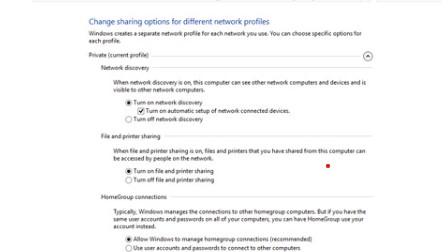How to Enable Network Discovery on Windows – Step-by-Step Guide (2025)
If you’re trying to share files, printers, or simply connect with other devices on the same network, Network Discovery is essential. It allows your Windows computer to see and be seen by other networked devices. If it’s turned off, you may face trouble accessing shared folders, streaming media, or connecting printers.
In this comprehensive guide, we’ll walk you through how to enable Network Discovery on Windows 10 and Windows 11, along with common troubleshooting tips.
What is Network Discovery?
Network Discovery is a setting in Windows that determines whether your PC can see (or be seen by) other devices on a network. It’s crucial for:
- File and printer sharing
- Accessing shared folders
- Media streaming
- Smart device connections (TVs, NAS, etc.)
When disabled, your PC becomes “invisible” to other devices on the same network.
How to Enable Network Discovery on Windows
You can turn on Network Discovery using Control Panel or Command Prompt/PowerShell. Let’s start with the most user-friendly way.
Method 1: Enable Network Discovery via Control Panel
Step-by-Step Instructions:
- Open Control Panel
- Press
Windows + R, typecontrol, and hit Enter.
- Navigate to Network and Sharing Center
- Click on “Network and Internet”, then choose “Network and Sharing Center”.
- Change Advanced Sharing Settings
- In the left pane, click “Change advanced sharing settings”.
- Select Network Profile
- You’ll see profiles like Private, Guest or Public, and All Networks.
- Expand the profile you want to modify (usually Private).
- Enable Network Discovery
- Select “Turn on network discovery”.
- Also check “Turn on automatic setup of network-connected devices”.
- Click Save changes.
💡 Pro Tip: Make sure your network is set to Private, not Public. Public networks disable discovery by default for security.

Method 2: Enable Network Discovery Using Command Prompt
If you prefer a quicker method:
- Open Command Prompt as Administrator
- Press
Start, type cmd, right-click on Command Prompt, and choose Run as administrator.
- Run the following command:
netsh advfirewall firewall set rule group="Network Discovery" new enable=YesThis command enables the necessary firewall rules for Network Discovery.
Method 3: Use PowerShell to Enable Network Discovery
PowerShell is another fast and scriptable way to do it:
- Open PowerShell as Administrator
- Search for PowerShell, right-click, and choose Run as administrator.
- Run this command:
Set-NetFirewallRule -DisplayGroup "Network Discovery" -Enabled TrueNetwork Discovery Still Not Working? Try These Fixes
If you’ve enabled Network Discovery but it’s still not working, check these:
Restart Required Services
Make sure these services are running:
- Function Discovery Resource Publication
- SSDP Discovery
- UPnP Device Host
To check:
- Press
Windows + R, typeservices.msc, and press Enter. - Find each service above, right-click → Start (or Restart).
- Set Startup Type to Automatic.
Check Windows Firewall
- Go to Control Panel > System and Security > Windows Defender Firewall.
- Click Allow an app or feature through Windows Defender Firewall.
- Make sure Network Discovery is checked for Private networks.
Final Thoughts
Enabling Network Discovery on Windows is essential for seamless connectivity between devices in your home or office. Whether you’re sharing files or streaming content, having this feature enabled can save time and hassle.
By following the above steps, you can easily enable Network Discovery and troubleshoot issues if it doesn’t work right away.
Frequently Asked Questions (FAQ)
Is Network Discovery safe?
Yes, on private networks. Avoid enabling it on public networks like airports or cafes for security reasons.
Why does Network Discovery keep turning off?
This usually happens due to:
- Windows updates resetting settings
- Misconfigured firewall rules
- Disabled services (like SSDP or UPnP)
Can I automate Network Discovery on boot?
Yes, using PowerShell scripts in Task Scheduler to run at startup.
Share Your Experience!
Have you successfully enabled Network Discovery? Did any specific fix work for you? Let us know in the comments below!
And don’t forget to share this guide with friends or colleagues who might be struggling with the same issue.
